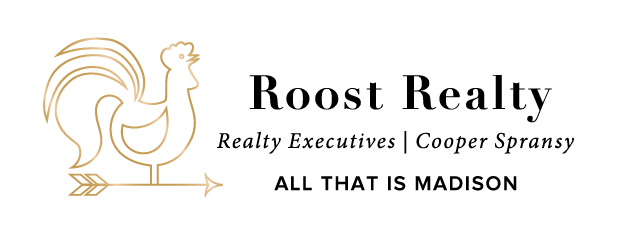Despite Rate Increases, It’s Still a Good Time to Buy a Home
/We may not know when, and we may not know by how much, but we do know this – interest rates are going to continue to rise. But we also know something else – while interest rates have risen from their historic lows earlier this year (for example, 3.3% in early May, compared to 4.33% today), it’s still a good time to buy a home. Because historically, today’s rates are still low, especially when compared to the early 1980s, when rates were as high as 18%.
However, for every percent that interest rates go up, a buyer loses almost 11% of their purchasing power. So, as experts anticipate that mortgage rates will begin to rise again, now might be the right time to buy your next home.
Wondering why rates are going to go up? To help break it down, here’s what you need to know. It’s the result of something called Quantitative Easing (or “QE” in industry shorthand). Quantitative Easing was a policy enacted by the U.S. government in 2008, in the hopes of jump-starting the housing recovery by buying debt in the form of government bonds -- which, in turn, would lower mortgage rates.
The U.S. government’s “QE” policy was not meant to be permanent, and instead was designed to simply strengthen the market enough to get the economy back on its feet. However, no one knows when the government’s policy of quantitative easing will end – or “taper off”, as analysts predict.
Last week, many financial experts expected the Federal Reserve to announce a plan to begin tapering off its bond purchases, but the Fed has yet to make that call. The good news for you is that interest rates may fluctuate very little in the immediate future – but today’s rates likely will not last forever.
How long before interest rates begin to rise? That's a great question that no one can really answer. What we do know is how they may affect buyers’ household budgets once they do start going up. The following tables give you some examples.
The first table lays out the difference in your monthly payment of principal & interest (or, “P&I”) as rates rise. You’ll see that a .8% increase in the 30-year fixed interest rate results in a $24,179 decrease in your purchasing power.
Principal and Interest
|
PURCHASE PRICE |
LOAN AMOUNT (after 10% down payment) |
P&I, BASED ON 30 YR FIXED- 4.5% |
P&I, BASED ON 30 YR FIXED- 5% |
P&I, BASED ON 30 YR FIXED 5.3% |
|
Home A $200,000 |
$180,000 |
$912 |
$966 |
$1,000 |
|
Home B $250,000 |
$225,000 |
$1,140 |
$1,208 |
$1,249 |
|
Home C $300,000 |
$270,000 |
$1,368 |
$1,449 |
$1,499 |
|
Home D $350,000 |
$315,000 |
$1,596 |
$1,691 |
$1,749 |
NOTES:
- If you're budgeting for a monthly P&I payment of $1,140, at a fixed rate of 4.5%, you can afford a purchase price of $250,000, (or a loan amount of $225,000).
- If you're budgeting for a monthly P&I payment of $1,140, at a fixed rate of 5.3%, you can afford a purchase price of $225,821, (or a loan amount of $205,292).
The second table shows the rate of appreciation we saw this year -- an increase of 7-8% in 2013 inventory, over 2012 inventory (this is reflective of the neighborhoods we work in most -- contact us for specific appreciation rates in your neighborhoods of interest).
Future Home Prices (if rates continue at current rate of appreciation)
|
TODAY'S PRICE |
7% INCREASE |
8% INCREASE |
INCREASE IN DOLLARS |
|
Home A $200,000 |
$214,000 |
$216,000 |
$14,000-16,000 |
|
Home B $250,000 |
$267,500 |
$270,000 |
$16,700-20,000 |
|
Home C $300,000 |
$321,000 |
$324,000 |
$21,000-24,000 |
|
Home D $350,000 |
$374,500 |
$378,000 |
$24,500-78,000 |
NOTES:
- Home B @ 4.5%= $250,000, (P&I) $1,140
- If prices continue to appreciate at 7-8% annually, Home B will cost $267,500 next spring.
The third table combines the information from the previous two:
Rate Table & Potential Future Prices
|
FUTURE PRICE |
LOAN AMOUNT (after 10% down payment) |
P&I, BASED ON 30 YR FIXED- 4.5% |
P&I, BASED ON 30 YR FIXED- 5.0% |
P&I, BASED ON 30 YEAR FIXED- 5.3% |
|
Home A $214,000 |
$192,600 |
$976 |
$1,034 |
$1,070 |
|
Home B $267,500 |
$240,750 |
$1,220 |
$1,292 |
$1,337 |
|
Home C $321,000 |
$288,900 |
$1,464 |
$1,551 |
$1,604 |
|
Home D $374,500 |
$337,050 |
$1,708 |
$1,812 |
$1,872 |
No one has a crystal ball, and we can’t say with 100% certainty where interest rates and prices will be next spring. But with so much information at our fingertips, it's crucial that potential buyers educate themselves when planning for the future. The housing market usually slows down a bit in the fall and winter, which means the multiple offers and bidding wars that were so common this summer may begin to ease up. This is good news for potential buyers -- so, if you’ve been thinking about jumping into the market, now is a good time to buy a home.

